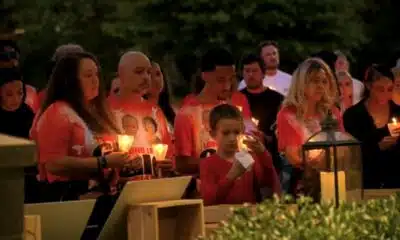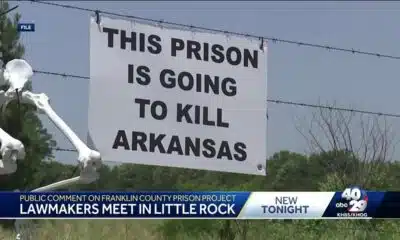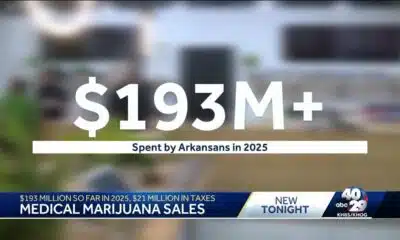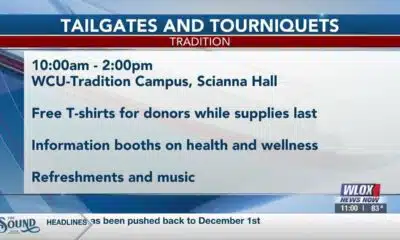News from the South - Texas News Feed
Inside Fort Worth’s Narcotic Farm Experiment
Texas’ history of addiction treatment can be seen as a dance in place: public opinion swings, the Legislature takes one step forward, then two political steps back. Ultimately, little progress is made. Today’s attitudes aren’t dissimilar to the century-old ones described in historian Holly M. Karibo’s new book, Rehab on the Range: A History of Addiction and Incarceration in the American West (University of Texas Press, November 2024).
As Karibo acknowledges in her introduction, the book’s many historical arguments “will likely sound very familiar to twenty-first century readers.” Moral panic about opiates and the shifting demographics of drug users. Doctors withholding care out of very real fear of legal retribution. Fierce disagreements over whether addiction is a medical, legal, or societal issue.
She lays out a detailed institutional history of one experimental rehab center in Texas, a place meant to be a “radical reimagining of the nation’s approach to addiction.” Plans for the center drummed up “unyielding optimism that this new program would provide a modern fix to a modern problem.”
But the Fort Worth experiment ultimately left a complicated legacy.
In the early 20th century, new federal drug prohibition laws were reshaping the societal and penal landscape. It’s against this backdrop that Texans took a central role in the attempt to balance punishment with treatment for the growing percentage of the U.S. population addicted to drugs.
“THIS EXPANSIVE INSTITUTION WAS ULTIMATELY MIRED IN THE NATION’S COMMITMENT TO INCARCERATION.”
In 1931, the burgeoning oil city of Fort Worth scored a massive federal investment in the form of an experimental “narcotic farm”—a setup meant to provide novel addiction treatment to people in a quasi-carceral setting.(Though Karibo argues there’s no such thing as “soft incarceration”—especially when any unauthorized attempt to leave could land you in prison.)
This farm and its sister institution in Kentucky treated volunteer patients struggling with addiction, as well as people sent there because of run-ins with the law. The creation of these facilities constituted “one of the longest-running and most expansive federal experiments in drug addiction treatment in the nation’s history,” Karibo writes. What set the Fort Worth facility apart from older clinics was its focus not just on physical detox, but on psychotherapy as a treatment for addiction. The facility also followed the playbook of Texas prisons by using manual farm labor as a dubious rehabilitation tool.
The Fort Worth center was supposed to resemble a college campus, rather than a prison. It promised good food, a calm environment, and stability. But Karibo writes this expectation “vastly differed from what many patients experienced.”
Rehab on the Range emphasizes the context of the nation’s long churn treating and penalizing drug use while simultaneously zooming in on the details and key players in Fort Worth’s narcotic farm experiment, which finally ended in the 1970s after three decades of tumult.
Exhaustively researched, Karibo’s work at times reads like an academic treatise, at times like investigative journalism. She pored over testimonials, reports, and patient demographic data to pluck out stories and trends that highlight the humanity within the walls of these facilities.
It’s also a sometimes painfully familiar look at the uphill battle for progressive—if flawed—drug policies.
When the Fort Worth facility opened in 1938, efforts were made to train incoming staff on how to treat people with addiction as patients, not prisoners, even if they had been sent there based on a criminal penalty or transferred from a prison. Karibo writes that its high-ranking medical personnel were “deeply concerned that preconceived stereotypes about addicts would undermine the effectiveness of the treatment program.” But the training did not eliminate deeply held biases among both patients and staff, the book states. The roots of the stigma ran deep, creating cracks in the experiment from the outset.

The political landscape in which such experiments take place largely determines how successful they can be. In the case of the Fort Worth Narcotic Farm, the post-World War II surge of the international drug trade coincided with a waning of political support for treatment and a shift toward punitive laws, including minimum sentences for drug crimes. In 1957, Karibo writes, the Texas Legislature voted unanimously to support the death penalty for selling drugs to minors.
That’s a familiar rallying cry: In 2024, Donald Trump called for the death penalty for drug traffickers while on the presidential campaign trail.
The cycle of increasing punitive policies boosts the population of incarcerated people with addiction issues. Karibo writes that as more people were locked up for drug crimes in the early 20th century, people blamed them—and their assumed moral failures and character flaws—for increased federal prison unrest, largely ignoring that the general increase in the incarcerated population was stretching the physical limits of prisons and staff. The idea of establishing federal drug treatment facilities was a pressure release valve for prisons disguised as a progressive policy.
“This expansive institution … was ultimately mired in the nation’s commitment to incarceration as a solution to the ‘drug problem,’” she concludes.
Drug use proliferated in the Fort Worth facility, as it does in Texas prisons today. Rehab on the Range outlines the factors that kept people addicted even in treatment. Paltry guard pay created incentives for staff to help funnel drugs inside for a price. Dubious treatment techniques boosted animosity and hopelessness among patients. Complete isolation from the pressures of the outside world—and a lack of meaningful follow-up care—often led to relapse upon release.
Rehab on the Range intelligently describes one of the nation’s first and largest experiments in federally funded drug treatment, examining it within a century-long context of public and legal attitudes toward addiction. Karibo looks critically at all stages of the experiment: conception, execution, patient experience, external challenges. She includes voices of supporters and of critics.
Fundamentally, this book reveals how the United States—and Texas—has long struggled to understand its own attitudes about drug addiction. Do we blame or help those who become addicted? Do we focus on punitive policies or expanding social and medical services? What role do our prisons play?
These questions were already being asked 100 years ago, and we’re still waiting for answers.
The post Inside Fort Worth’s Narcotic Farm Experiment appeared first on www.texasobserver.org
News from the South - Texas News Feed
Frustrated with poor play against UTEP, Arch Manning will 'get back to basics'
SUMMARY: Texas quarterback Arch Manning and coach Steve Sarkisian acknowledge the team’s underwhelming offensive performance in a 27-10 win over UTEP. Manning completed 11 of 25 passes for 114 yards with a touchdown and an interception, frustrating fans expecting a stronger showing at home. Despite a rough first half with 10 consecutive incompletions, Manning showed flashes of promise and scored twice on the ground. Sarkisian emphasized Manning’s mental struggle rather than physical injury and expressed confidence in his growth and consistency. Manning committed to improving fundamentals and handling in-game pressure ahead of tougher matchups, including their SEC opener against Florida on Oct. 4.
The post Frustrated with poor play against UTEP, Arch Manning will 'get back to basics' appeared first on www.kxan.com
News from the South - Texas News Feed
Texas nursing students return from life-changing internship in Africa
SUMMARY: Two Texas nursing students, Tom Strandwitz and Valerie Moon, participated in Mercy Ships’ inaugural nursing internship aboard the Africa Mercy hospital ship in Madagascar. Selected from nationwide applicants, they gained hands-on experience in various departments, providing free surgeries and care in underserved regions. Their travel expenses were covered by over $11,000 raised through community GoFundMe campaigns. Both students were deeply impacted by patient interactions, such as cataract surgeries restoring sight and building trust with families. The internship broadened their perspectives on global health care. They plan to continue careers in intensive care and public health, with hopes to return to international nursing missions.
Read the full article
The post Texas nursing students return from life-changing internship in Africa appeared first on www.kxan.com
News from the South - Texas News Feed
Austin becoming FEMA-approved emergency alert authority, planning 1st test alert
SUMMARY: On Monday, Sept. 29, Austin will conduct a test of the Integrated Public Alert and Warning System (IPAWS), becoming a FEMA-approved alerting authority able to send emergency alerts via Wireless Emergency Alerts (WEA) to cell phones and Emergency Alert System (EAS) messages to TV and radio. This coordinated test at 3 p.m. will cover the city across its three counties—Travis, Hays, and Williamson. The alerts will clearly indicate a test and require no action. IPAWS allows authenticated, geotargeted emergency notifications without subscription, enhancing public safety communication. More details are available at ReadyCentralTexas.org and Ready.gov/alerts.
The post Austin becoming FEMA-approved emergency alert authority, planning 1st test alert appeared first on www.kxan.com
-
News from the South - Kentucky News Feed6 days ago
Lexington man accused of carjacking, firing gun during police chase faces federal firearm charge
-
News from the South - Arkansas News Feed7 days ago
Group in lawsuit say Franklin county prison land was bought before it was inspected
-
The Center Square6 days ago
California mother says daughter killed herself after being transitioned by school | California
-
Local News6 days ago
US stocks inch to more records as inflation slows and Oracle soars
-
News from the South - Arkansas News Feed6 days ago
Arkansas medical marijuana sales on pace for record year
-
Local News Video6 days ago
William Carey University holds 'tailgates and tourniquets' blood drive
-
News from the South - Missouri News Feed6 days ago
Local, statewide officials react to Charlie Kirk death after shooting in Utah
-
News from the South - Alabama News Feed6 days ago
Zaxby's Player of the Week: Dylan Jackson, Vigor WR














































